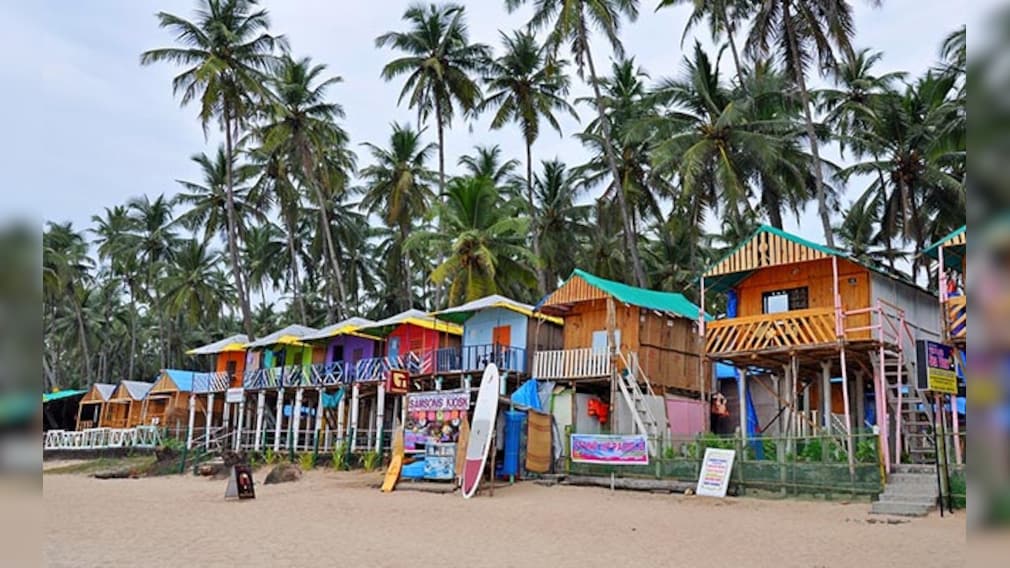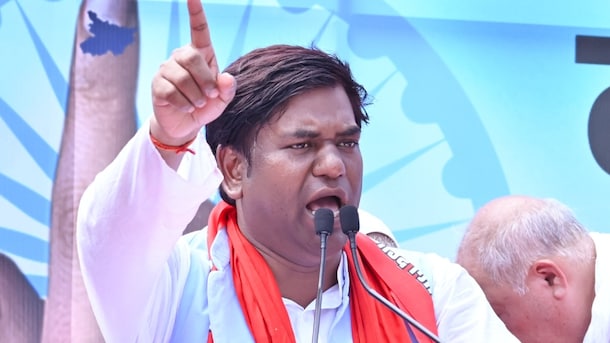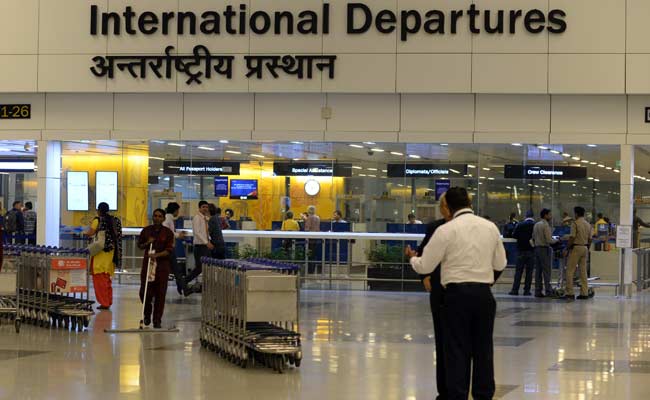Opinion | "Just Delhi By The Sea": How Goa Drove Its Tourists Away
Goa's sleepy and leisurely environment, once its greatest asset, is now its weakness.You can get WiFi on a surfboard in Bali, but still struggle to find a clean loo in Baga.

Everyone loves Goa. Who doesn't? It's a global tourist destination for millions of travellers worldwide. But its charm is fading, at least among overseas tourists. Goa is India's pride, and yet, we seem to be its worst enemy.
During my many visits, Goa has often felt like a land divided into two worlds, running parallel yet rarely offering a meeting point. One Goa is for desi tourists, loved by the newly-weds, the honeymoon brigades, the reel-chasing casino crowd. This Goa is chaotic, crowded and noisy. But it's thriving.
The other Goa is shrinking, actually vanishing. It's the one that once belonged to foreigners and expatriates who came seeking what Goa promised best: it promised freedom, anonymity, and the art of losing oneself.
Of course, the hippies were long gone. Chartered flights still land, but infrequently. The new-age traveller, who once thronged this former Portuguese colony, is now choosing other sandy shores and exotic beaches where beer costs less, bureaucracy doesn't exist and where Goa-like freedom is available in abundance.
Being of Indian origin but of foreign nationality, I have dabbled in both worlds in Goa. I remember one night, some years ago, at Club Fresh in Anjuna. It felt like a parallel universe - the expat Goa that hides from mainland desi crowds. The music rolled into the Arabian Sea and no one judged the man dancing out of sync with the music. "It's parties, it's people, it's funky freaky fashion," said a bartender from San Francisco. Around us, couples from Russia, Israel, Germany and the UK chatted under white canopies. That was the Goa the foreign tourists fell in love with. That Goa was borderless, unbothered and blissfully free. But that Goa is fading fast.
When Chartered Flights Dwindled
In the 1970s, when the first wave of hippies reached Goa, it was love at first sight. The sea was blue, the sandy beaches clean. It offered a haven for those who were rather tired of the capitalist West. By the 1980s, Goa had become Asia's sun-soaked secret. At its peak, nearly a thousand charter flights a season landed at the tiny Dabolim airport, carrying about 9 lakh foreign tourists from the UK, Germany, the US, Israel and, above all, Russia. They came for yoga, trance and indeed for soft drugs. Or they thronged simply for the art of doing nothing - "to chill out", as we say in India.
But in 2022 (January - December), according to official data, only 1.35 lakh passengers arrived in Goa by both chartered and regular flights - a sharp decline from its peak. A report from December 2023 states that charter flights at Dabolim airport dropped to 38 (carrying 14,239 passengers) in that month alone, down from 75 flights (29,048 passengers) in December 2022.
The sharpest drop has been from the UK and Russia, once Goa's biggest markets. The British holidaymaker now prefers Thailand's Koh Samui or Vietnam's Da Nang, where a pint costs a dollar, hotels are cheaper and visas are instant. Russians, who gave Calangute its Cyrillic signboards, now crowd Sri Lanka, Sharm el-Sheikh (Egypt) and Antalya (Turkey) - all arguably cheaper, cleaner and more organised than Goa.
The state government has been explaining, rather unconvincingly, that "from volume, we are now focusing on value and quality - longer stays, higher local spending, and greater community engagement".The state aims to shift from mass tourism to meaningful tourism, creating livelihoods while preserving Goa's natural and cultural heritage. Many would say these are lame excuses. Any lay businessman will tell you the desired outcome is always in scale and mass production. Also, the current state government uses the word "visitors" for overseas tourists, which includes both foreign tourists and visitors for non-tourism purposes.
Good news is that the number of tourists and flights has been climbing back up in recent months, but not by much; who knows it might even prove to be a false dawn. The state government says Goa drew about 2.7 lakh foreign "visitors" in the first half of 2025. Good, but not great. In 2024, about 4.68 lakh foreign "visitors" came to Goa. Again, not great. To put things in perspective, in 2024, Bali welcomed 5.2 million foreign tourists, Antalya 4.6 million and Sharm el-Sheikh about 1.2 million. The contrast is brutal. Goa, which once stood shoulder to shoulder with Southeast Asia's finest, has slid down the global tourism ladder.
When I visited Sharm el-Sheikh recently, I was struck by the difference. The beaches were spotless, the service impeccable, and the roads smooth as glass. My guide, Abdul, who spoke five languages and kept referring to ancient Egyptian history like a scholar, charged fairly and sang Shah Rukh Khan songs between stops. There was trust, humour and safety - three things that too often go missing in Goa's tourist economy.
What Went Wrong?
The answers lie scattered across its crowded beaches. Some UK tourists, who were once regular Goa visitors, say that rising costs, exploitative taxi fares, inconsistent infrastructure and overregulation have chipped away at Goa's charm and its foreign tourists. The e-visa confusion post-Covid, curbs on late-night music and aggressive policing have alienated the very travellers who once defined its image. They complain about the traffic and believe Goa has turned into "Delhi by the Sea".
Meanwhile, competitors moved swiftly. Thailand waived visas for dozens of countries. Vietnam and Sri Lanka launched marketing blitzes. Indonesia opened direct low-cost flights from Europe. Egypt reinvented itself as a Red Sea haven with world-class security and customer service. Goa, by contrast, still struggles to manage its taxi mafias, licences and toughening rules.
Once, foreign tourists made up a fifth of arrivals; today they form a small percentage. Also, a week in Goa that costs 1,000 GBP can be done in Da Nang or Phuket for 600 GBP - with better roads, cheaper beer and quieter nights.
Goa's sleepy and leisurely environment, once its greatest asset, is now its weakness. Also, you can get WiFi on a surfboard in Bali, but still struggle to find a clean loo in Baga. The state's infrastructure has not kept pace with its reputation. The power cuts, the erratic internet, the inflated hotel prices - all conspire to make Goa feel less like a paradise it once was.
A British friend of mine, who first visited Goa as a hippie and later made it her home, has now returned to the UK. "Over-commercialisation and the droves of Delhi settlers after Covid have ruptured its tranquility," she complained to me. "I miss the old Goa, but Bali and Phuket remind me of what Goa once was."
The Changing Soul of Goa
It is, however, interesting to note that every few years, Goa reinvents itself. At least it has so far over the years. The hippie Goa gave way to the "sell Goa in the rains" campaign. Then came the so-called "new generation" tourists - aloof, affluent, selective. They stayed in gated villas rather than Goan homestays. After that came the casino era, when the government tried to market Goa as the "Las Vegas of India".
But glitz came at a price. A string of high-profile crimes - rapes, murders, drug overdoses and dating scams - dented its reputation abroad. By the late 2010s, several foreign embassies began issuing travel advisories about safety in Goa.
Then came the pandemic, followed by the Russia-Ukraine war and the Israel-Gaza conflict. The two global events, which are still ongoing, were the shocks that disrupted traditional tourist trails. Both Russia and Israel are key source markets for Goa's foreign arrivals.
The Slow Comeback
Yet hope, like the tide, always returns. In the first six months of 2025, Goa received 54.5 lakh 'visitors', including 2.7 lakh foreigners. The numbers are still far below the pre-Covid 900,000 foreign arrivals, but the trajectory is upward.
The state government is trying to adapt. The new Manohar International Airport has opened to international traffic. Charter operators are being wooed with tax incentives. There's talk of reviving the "Goa Beyond Beaches" campaign, highlighting heritage villages, hinterland treks and wellness retreats. Electronic dance festivals are making a cautious comeback and homestays are being pushed as an alternative to hotels.
But the larger challenge is more emotional, less logistical. Goa needs to rediscover what it once meant - not just to the world, but to itself. Goa needs to reclaim the spirit of easy freedom, leisurely lifestyle, music echoing across moonlit beaches, conversations between strangers from opposite ends of the planet. That in a nutshell was the real currency of Goa's allure in the past. To regain its soul, Goa must remember what made the world fall in love with it - not its chaos, but its calm.
The Promise of Bebirth
As someone who still believes in Goa's unending charm, I say, don't write its obituary yet. The sea still whispers its old secrets. Its sunsets are still to die for. The state's cultural fabric, its music and its cuisine remain unique. It should regrow without losing itself. Perhaps it needs fewer casinos and more culture.
Goa has always been resilient. It survived colonisation and overcrowding. It has endured commercialisation. It can survive this foreign tourists' indifference too.
As the English Romantic poet Shelley once wrote, "If Winter comes, can Spring be far behind?"
(Syed Zubair Ahmed is a London-based senior Indian journalist with three decades of experience with the Western media)
Disclaimer: These are the personal opinions of the author
-
Trishul: India's Mega Tri-Service Military Exercise Rattles Pakistan
Trishul, NDTV was told, is meant to send a clear message to Pak, that India stands ready to defend its territory and, if necessary, pick up where Operation Sindoor left off in May.
-
Opinion | Does India Control The Taliban?
By trying to cover its own inadequacies in terms of domestic and neighbourhood policies using India's alleged involvement, Pakistan is again playing the victim card. But why does India let these accusations go mostly unchallenged?
-
The Rafale Pilot Pak Lied About Capturing, And The MiG-21 Pilot It Did
Squadron Leader Singh's journey to the Rafale cockpit began eight years ago, in 2017, when she was commissioned into the Indian Air Force.
-
Pak-Afghan Inch Closer To 'Open War' After Failed Turkey Peace Talks
The failed talks have also refocused attention on Pakistan Defence Minister Khawaja Asif's remarks, that Islamabad may have no choice but to engage in open conflict" if dialogue fails.
-
Opinion | 95% Of Gen-AI Projects Are Failing - And Markets Can Smell The Fear
Many firms are struggling to display profits from their AI investment. A new MIT study revealed that approximately 95% of generative AI business efforts are failing, with only 5% achieving meaningful revenue growth.
-
NDTV Exclusive: What Spending 24 Hours Inside A Gaza Refugee Tent Looks Like
They have been displaced 18 times. Eighteen times since the start of what Esraa calls "the genocide." Her tone is not bitter, just exhausted, heavy with the knowledge that this, too, may not be their final stop.
-
From 2020 To 2025: Mukesh Sahani's 25-Seat, Deputy Chief Minister Demands
Former Bollywood set man Mukesh Sahani could complete a storybook transition from the silver screen to becoming the second most powerful man in Bihar, if the Mahagathbadhan wins the 2025 Assembly election.
-
Opinion | Pak's Great Game: What Rawalpindi Really Wants From Its War With Afghanistan
Get the US in and get the money for itself - that's Pakistan's single-point agenda. And it's doing everything it can to achieve this.
-
Explained: 350 vs 1,100, CPCB vs IQAir, Who Has Got Delhi's AQI Right
Both CPCB and IQAir follow different methods of calculating air quality index, resulting in different numbers.
-
Opinion | Indians Are Growing Sick Of Customs Harassment - But Who Cares?
You would think that the Wintrack experience would serve as an example to customs officials and make them more careful and professional when dealing with citizens. In fact, the opposite is true.










